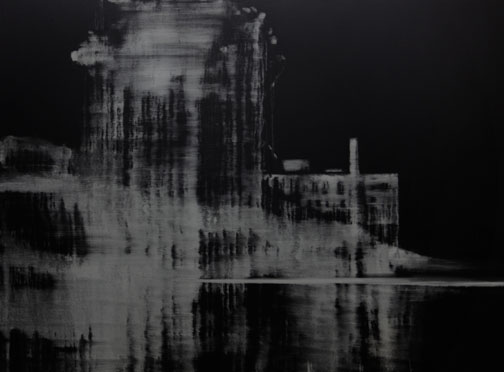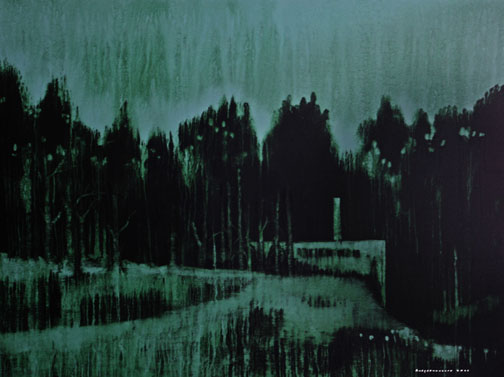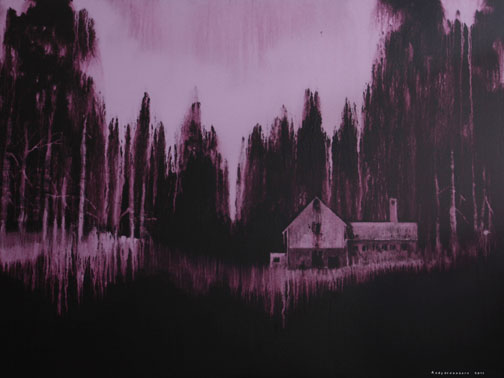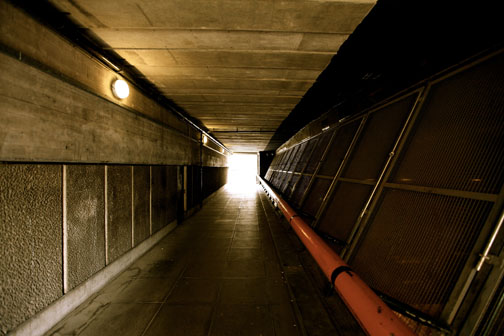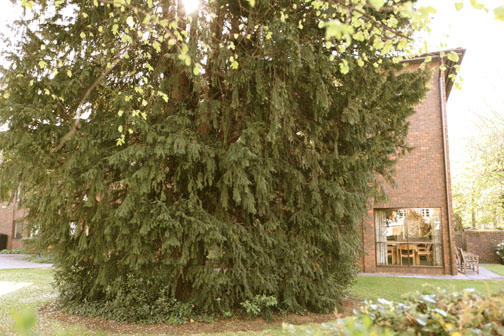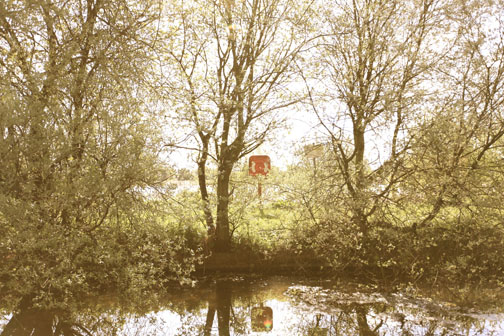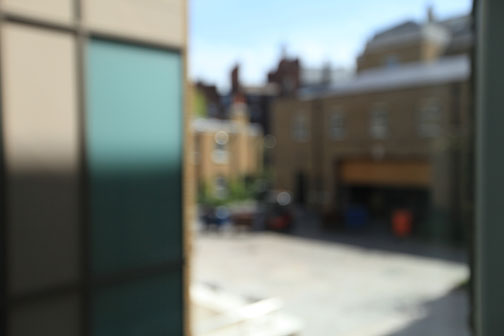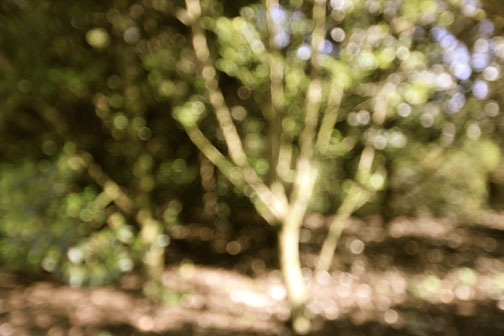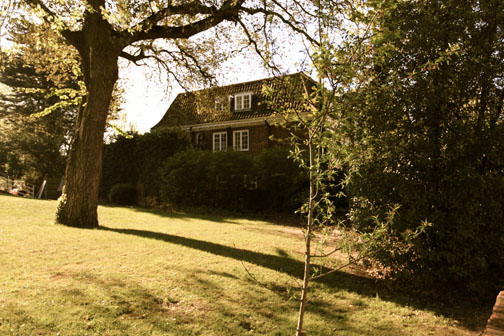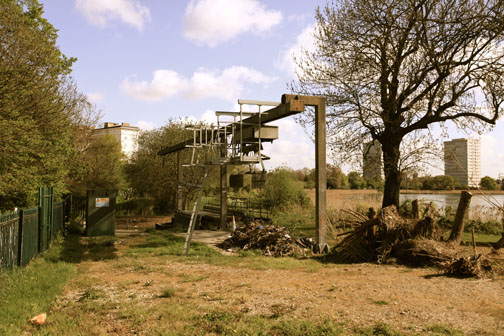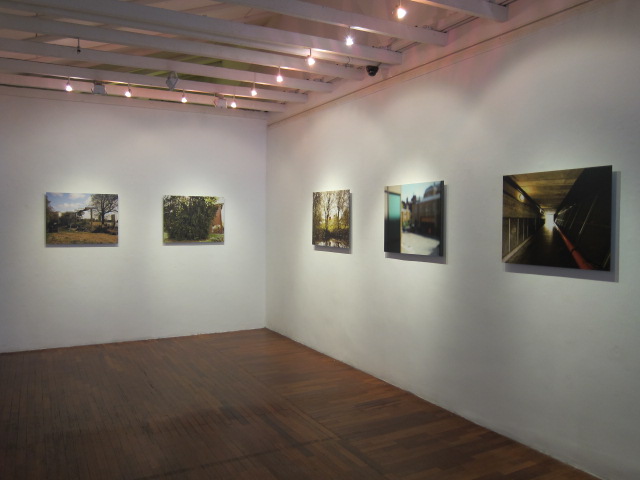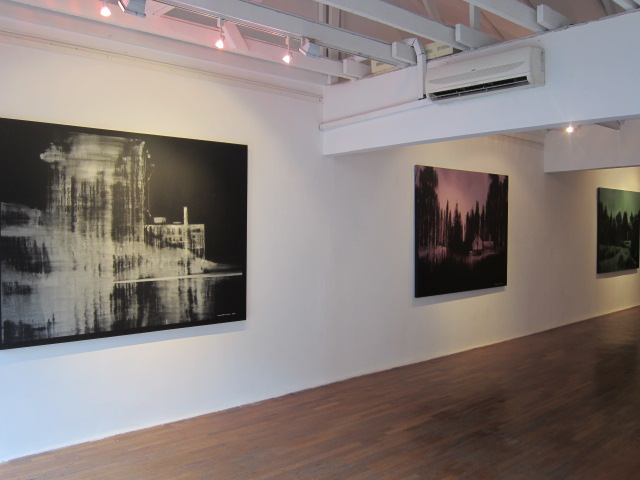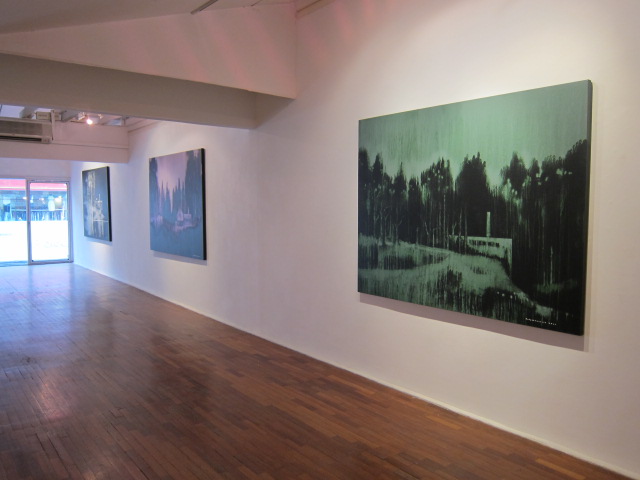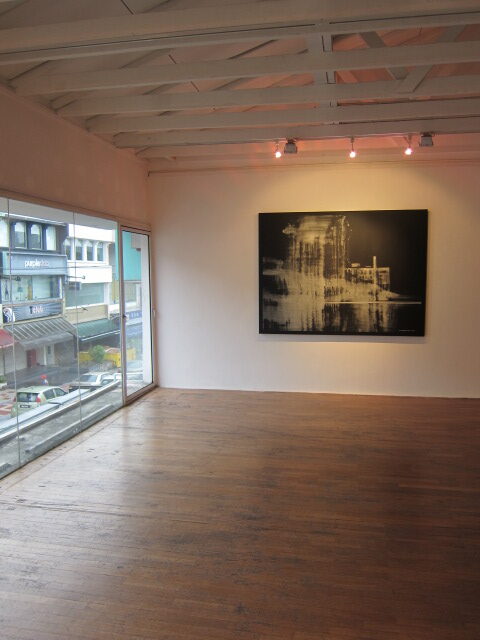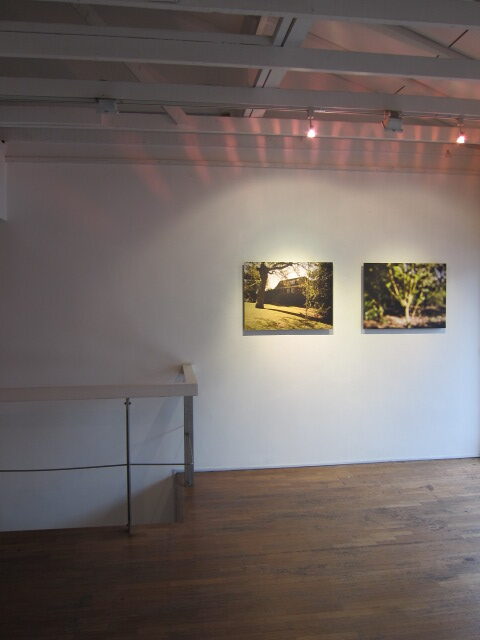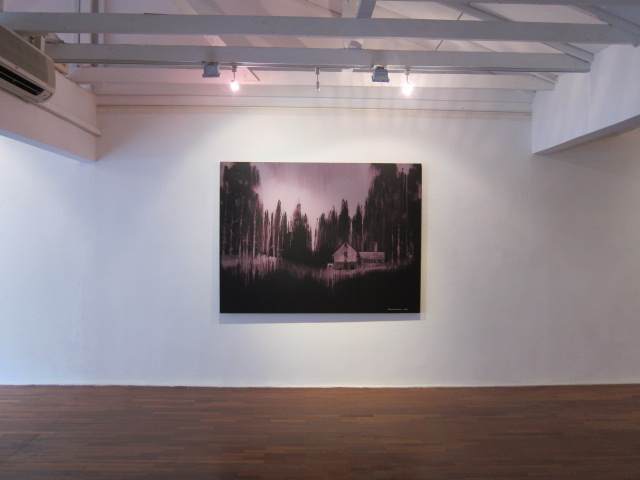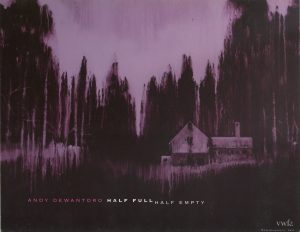Andy Dewantoro
Half Full Half Empty
Formally trained as an architect at the Bandung Institute of Technology, Andy Dewantoro began his career as an artist with an interest and exploration of non figurative abstract painting. However, his interest in architecture was reignited when, during his travels to Europe, Dewantoro became conscious of how the new urban landscape had become to over-ride the presence of the people whom live within; to the extent that it was the urban landscape that defined the meaning of the cities more so than those who occupied her.
Since that realisation, Dewantoro began painting a series of urban landscapes, consisting of buildings and constructions devoid of human presence, echoing a haunting impression of emptiness. This emptiness is further emphasised through his characteristic use of monochromatic, flat and washed out colours, resonating a sense of gloom amongst his viewers. Through this deliberate deletion of the human presence, Dewantoro’s works seek to remind us of the distance between people and the artificial world which, has now become the natural environment of urbanites.
Airports, bridges, factories and old iconic buildings populate the landscapes of Dewantoro; subjects chosen by the artist for their defining roles within urban industrial society. Whilst these places and buildings could seem to be located anywhere, there is an over-riding sense that they feel like and are located within Europe, rather than within the cities of Indonesia where Dewantoro lives and chooses his subjects from. This disconnect between perception and reality forms part of Dewantoro’s investigations within this series, as he seeks to express his theory that the Western concept of landscape has influenced how Asian people perceive space and time.
It is within this in-between area of our forgotten spaces that separates the dark from the light, emptiness from fullness, the past from the future, that Dewantoro conducts and constructs his works from.
I observe that something is changing in how “travelling” is understood, especially since the Internet become a part of everyday life. Travelling increasingly feels like drifting from place to place, rather than engaging in a pilgrimage to other spaces. The increasing pace of travel also commodifies the act of travel; adding to the global tourism industry.
Andy Dewantoro had no intention of preparing this exhibition as a presentation of his journeys, something he has been doing extensively during the last five years. Though it is through these different journeys that have brought him to the ideas and images that he is currently concentrating on. The visual images that he is currently working on mainly deal with the subjects of space and place. Andy Dewantoro’s works poetically talk about landscape in a manner which is very different to its already established definition.
Andy often portrays a single building; he is not presenting the city through representations of skylines that have been our visual reference every time we talk about the city. However, although they firmly stand alone, most of the buildings in Andy’s works immediately suggest a city landscape. The lack of common symbols and other visuals of urban space in Andy’s work takes us back to the memory about the space we live in everyday.
Andy’s early paintings were mostly abstracts. It was his interest in the discourses of architecture and urban spatial structure which began to shift the visual tendencies in his works. In 2008, he began drawing landscapes, although still in random thematic accounts, ranging from landscapes of airports, bridges, factories and other buildings. Although clearly about urban landscape, in Andy’s works the cities are represented as anonymous spaces. He does not describe Asian cities, for example, which are generally busier but instead reminds us of old towns in Europe.
It was for his first solo exhibition in 2008, that Andy started to engage with a creative space which he felt more appropriate in channeling his expressions. He began incorporating urban spaces in large paintings, invoking dark monochrome colors, like purple, pink, dark green or grey. The chosen monochrome colors emphasize the solitude and emptiness, hinting at the romantic and poetic flairs in Andy’s works. The paintings massive size also inspires the audience to fathom one’s awareness within a universe that is anchored to the memory of the city. In the past couple of years, Andy has also been painting a series in smaller sizes, where we can find a different impression since the visual elements are shrunk and increasingly blurred. In his larger paintings we feel a certain connectedness with his universe that is almost void, in the series of smaller paintings, we are situated outside the line, becoming the distant observer of the world on the move. Factories, churches, and bridges are some of the most frequent buildings depicted in Andy’s paintings. There is no specific reason why Andy picked these three types of buildings. However, weaving through his ideas, I can sense that these types of buildings are what people of today relate with the image of the city. The churches in Andy’s works – mainly old churches with a single tower- I think references the concept of the “minaret”. Meanwhile, the factory buildings become a symbol of how industrialization penetrates into the modern society, which in the later period introduced machine inventions and new life structures. The third architectural icon, namely the bridge, represents how urban spaces are connected to each other, and marks the movement of people from one place to another.
Andy Dewantoro then began exploring photography as a medium. As an artist who worked with landscape for several years, the photos taken during Andy’s journeys seem to be like sketches of his paintings. In the current photo series, Andy presents a whole different landscape from the visual images commonly found in his paintings. The landscape in his photography works outlines an object inside a building structure or a landscape structure, which is far from romantic or monumental. However we can see a running thread between his painting and photo works: a contradiction between the natural and the artificial, as well as the monochrome tendency.
Andy excludes human beings both in his video and photo works, to emphasize human creation; buildings as well as objects. The image of the city is often predominated by urban people and their lifestyles and less is focused on how a physical space is formed and affected by such lifestyles. By underlining the existence of object and physical structure, Andy tries to pull his audience to look at the physical, and not at the abstract image of the city.
Indeed Andy Dewantoro’s photography does not include the visual images taken during his journeys. Instead these photo works tries to expose things that are often overlooked during a trip. His photography is somewhat a footnote to the images presented in his painting. Meanwhile all his works, paintings and photography, could manifest as a footnote of our life, so that we allow ourselves to walk slowly and take a break from all of the hustle and bustle.
